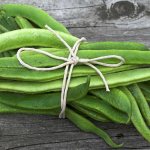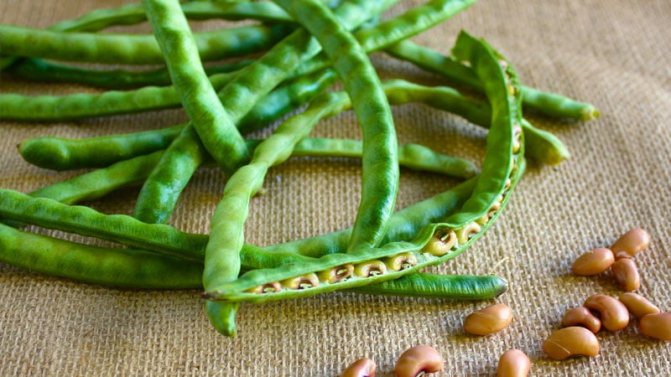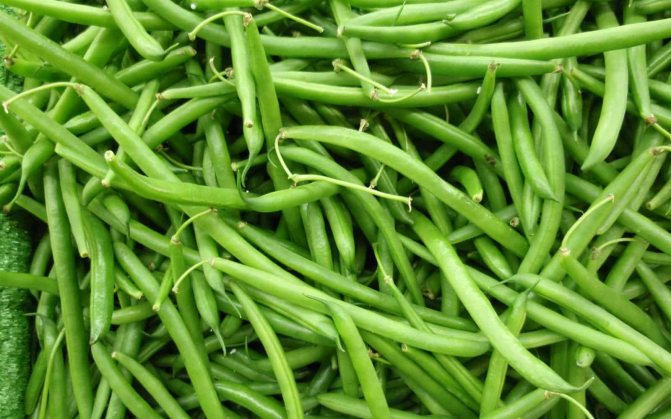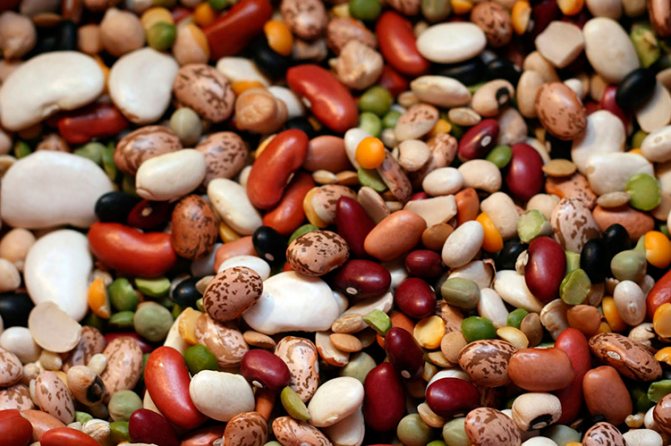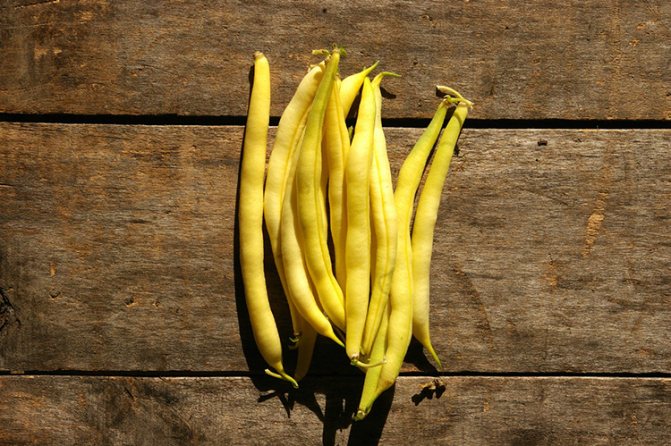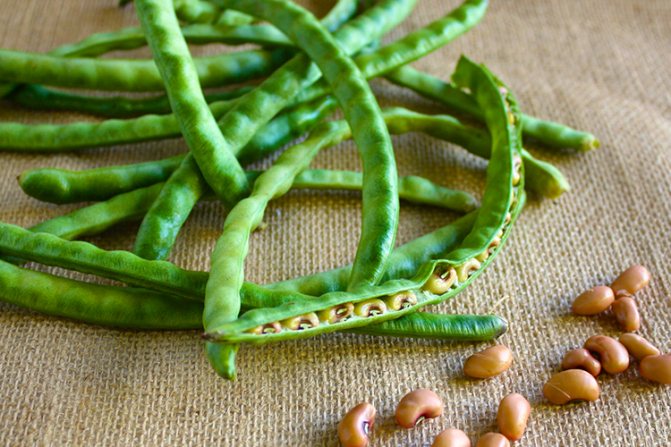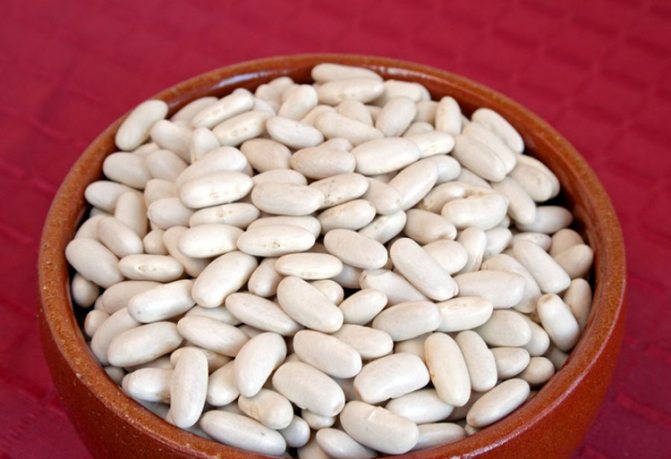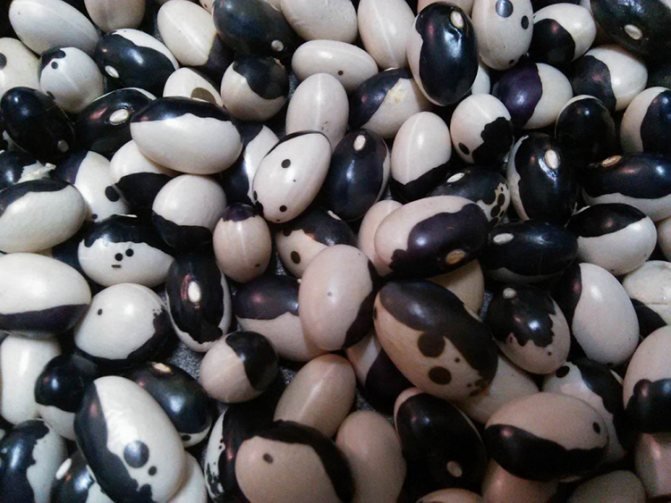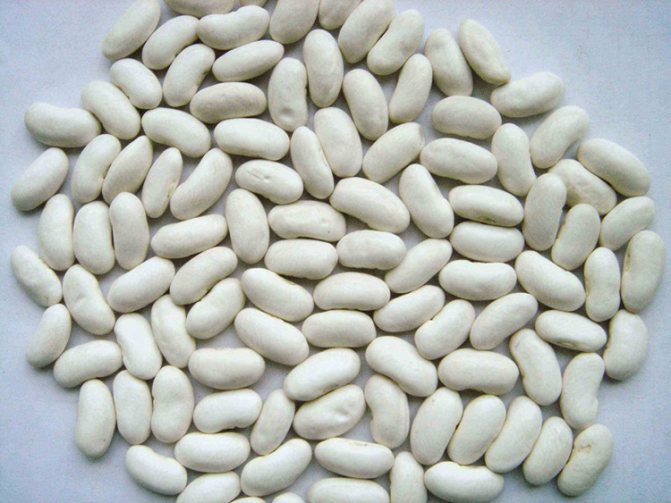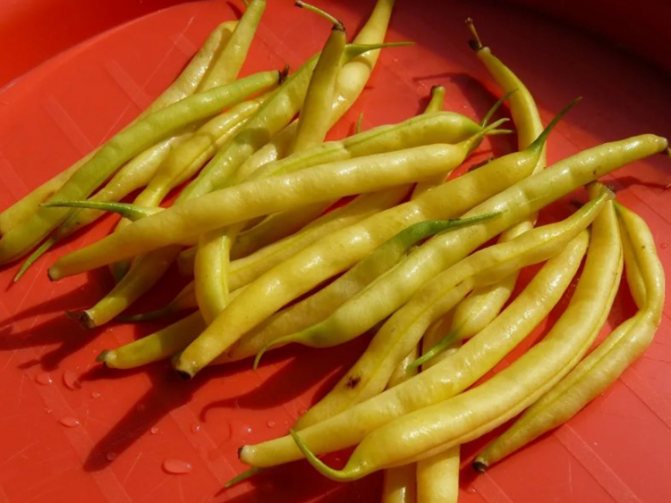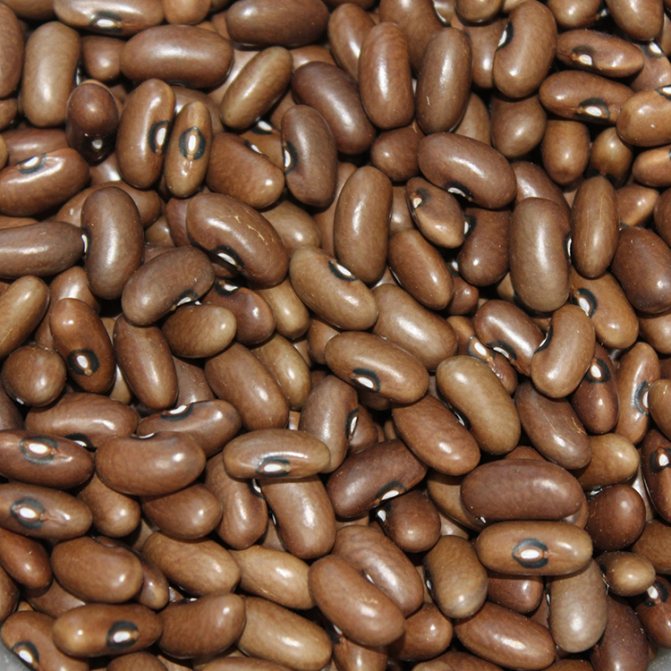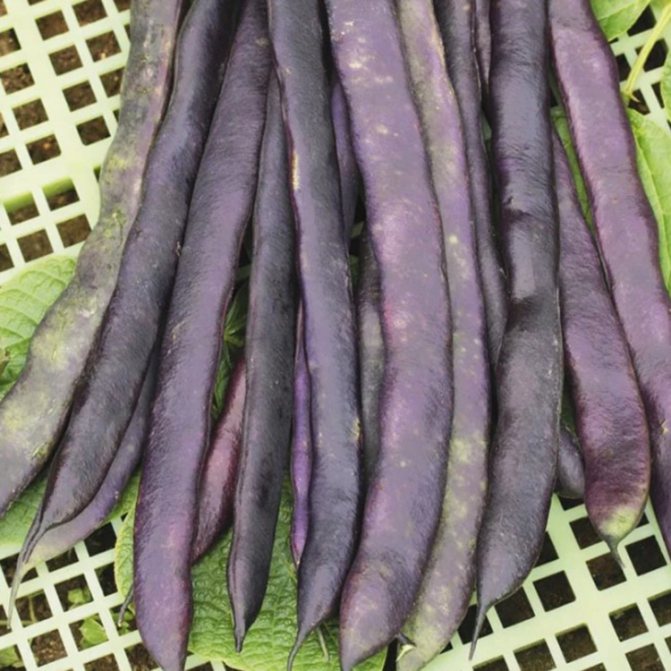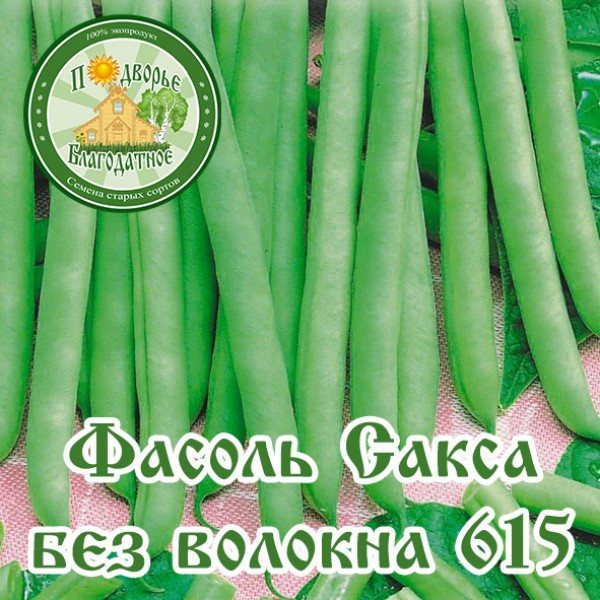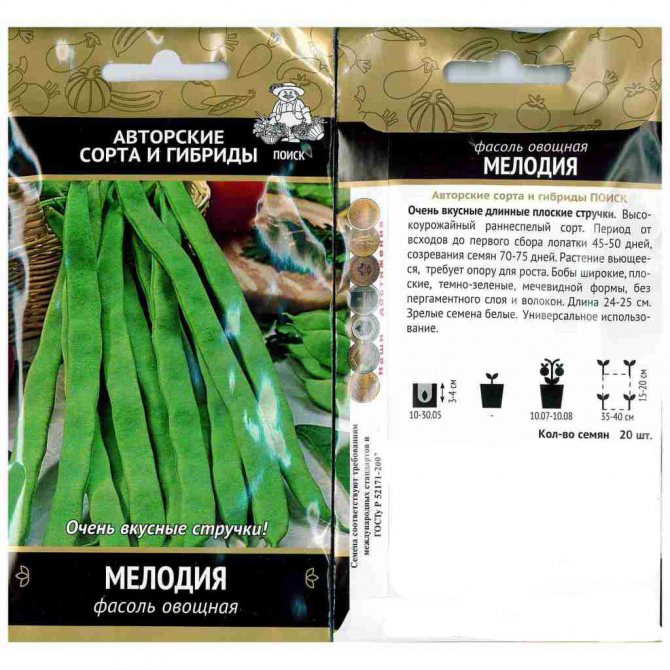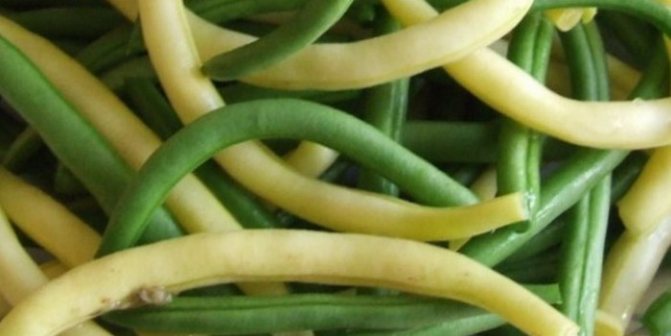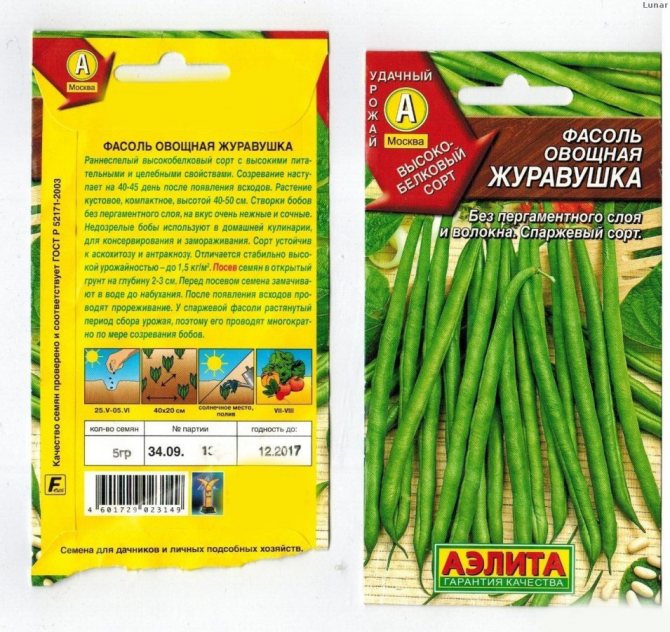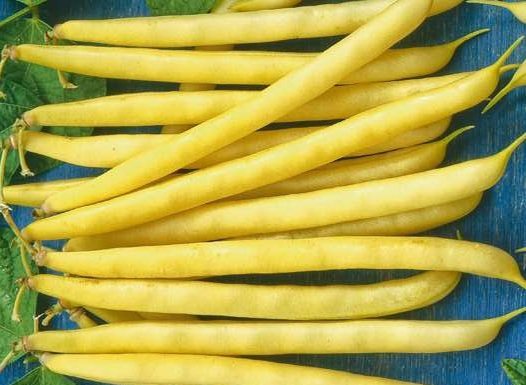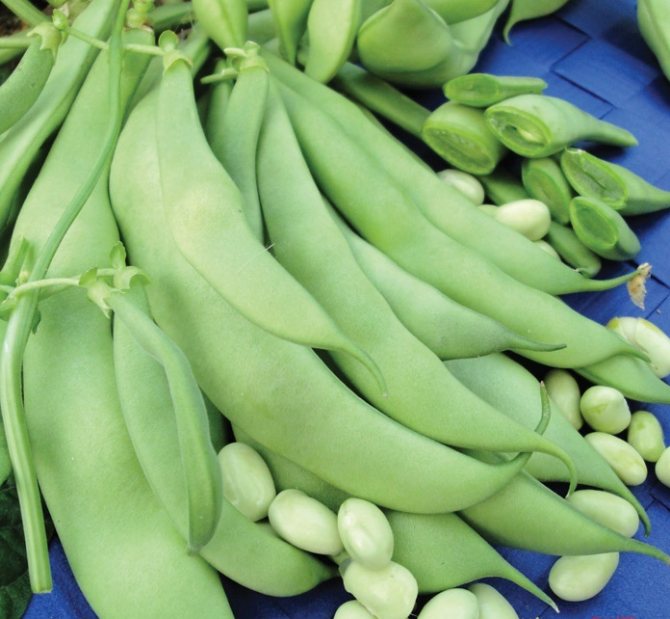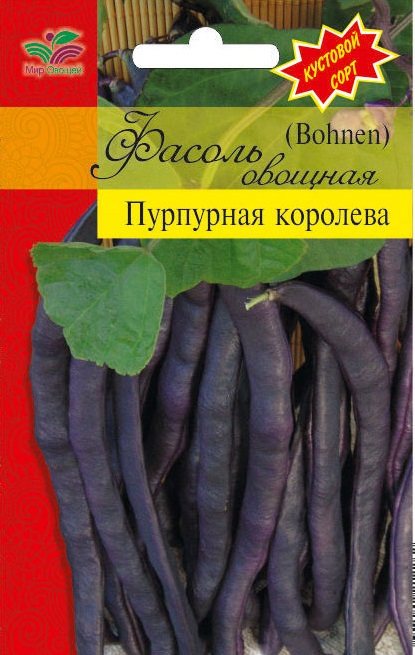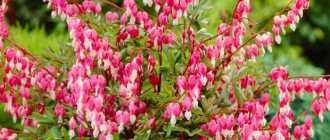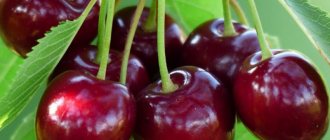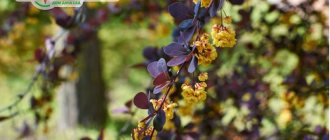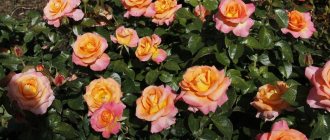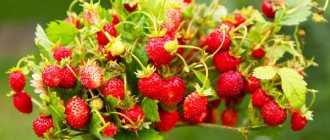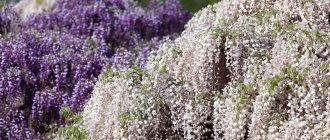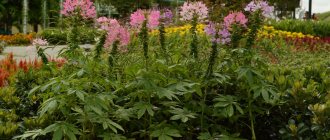The cultivation of green beans in summer cottages is becoming widespread. Not so long ago, only large farms grew this useful product. You can buy green pods without any problems - fresh, in the vegetable departments of supermarkets, or frozen, in the refrigerators of all stores, mostly imported products. Meanwhile, it is not difficult to grow this "green miracle" in the country. The most important thing in growing green beans, unlike other legumes, is to harvest on time. Do not overexpose the pods in the garden, making them tough and tasteless.
Green beans: growing and care
What it is?
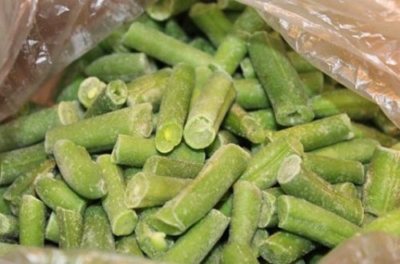
Asparagus beans are the unripe pods of common green beans, usually in a variety of varieties.
It is grown for the purpose of obtaining green pods, which contain amino acids, useful organic and mineral compounds. Asparagus beans get their name for their characteristic taste, which is similar to asparagus..
General characteristics
Consider how a vegetable grows. One of the unusual external characteristics of beans is their rather long pods. Domestic and European varieties of beans have pods, the standard length of which reaches 15-29 and even up to 40 centimeters. With proper care and appropriate climatic conditions, the pod sizes of high-quality European varieties of beans can reach more than 40 cm. At the break of the pod, a round section is always formed and jelly flesh is visible.
Beans can be curly and bush - especially valuable are the sugar varieties of standard asparagus beans, the thin pods of which are very tender and juicy.
Bean pods contain an optimal complex of essential vitamins - iron, zinc, and the plant also contains a large amount of magnesium, potassium and carotene.
Photo
Next, you can see what the asparagus or green beans look like.
Site selection and soil preparation for beans
Beans need a fairly bright place, she prefers rather sandy loam loose soils without stagnant moisture. Drafts are not a hindrance, but for curly and semi-peeling varieties tied to supports, the wind can be a problem.
In the south, melons and gourds cultivation of shelling beans is often practiced - in open space, poor soil and with poor watering.
But if all that a gardener has is six acres of summer cottages, then it makes sense to prepare beds for legumes, especially:
- in the fall, planting residues are carefully removed;
- the soil is enriched with rotted manure or compost;
- dolomite flour is introduced at the rate of 50-60 grams per square meter;
- also use kemira, ammophos, or any other complex mineral fertilizer according to the instructions;
- then shovels are dug to the depth of the bayonet;
- wood ash is introduced in spring - about 200 g per square meter;
- re-dug up.
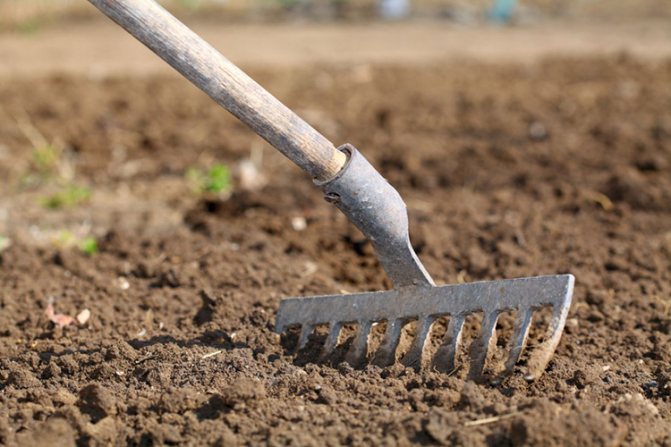

The best varieties of asparagus
Bush
Common outdoor bush asparagus beans include the following popular varieties.
"Saksa"
An early variety of beans (the crop can be harvested after 50 days, the total length of the pods can reach up to 12 cm). The height of the bushes can reach up to 40 cm.
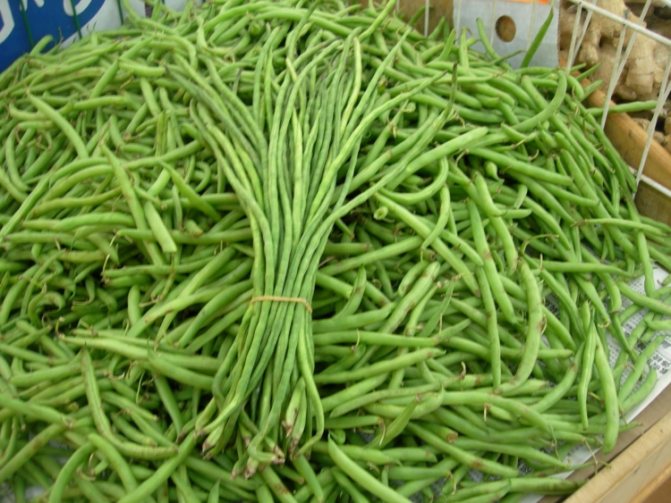

"Oil King"
It is also considered a fairly early variety. The fruits are harvested 50 days after planting in the ground. It is characterized by the presence of long pods up to 25 cm. This type is optimal for preservation preparation, as well as for preparing various fresh dishes.
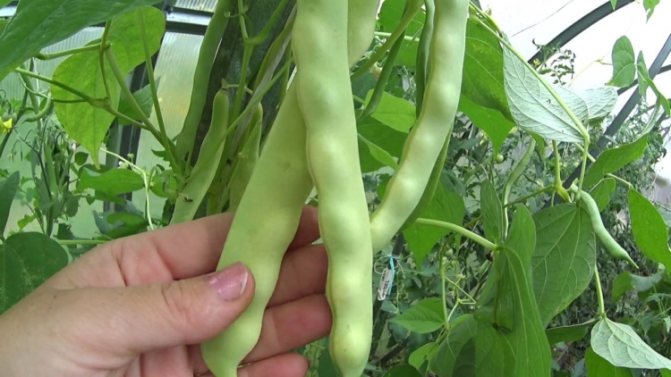

"Purple Queen"
The ripening dates of this variety are later. This variety is quite popular, because due to its unpretentiousness, beans can be grown on any soil. Mature pods can grow up to 15 cm in size and have an unusual purple color. This variety is mainly used for canning..
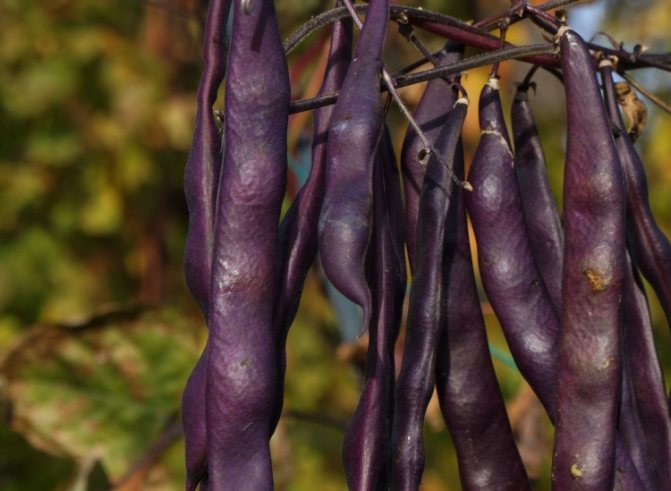

Curly
Some varieties of beans are referred to as "curly" - a kind of vines are ideal for decorating the site, so they are planted not only in greenhouses, but throughout the site. They perfectly darken the area, allowing you to grow shade-loving garden species in a safe environment.
These varieties are characterized by the presence of bright large leaves of a wide variety of shades. - white, pink, lilac. Among the most popular climbing varieties are the following.
"Golden nectar"
An interesting variety that delights with unusual bright yellow pods, the size of which can reach up to 25 cm. This species is classified as a mid-season crop - beans can ripen only after 70 days after the start of planting.
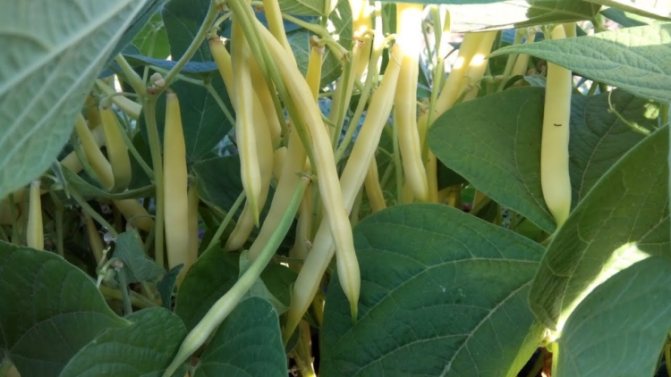

"Melody"
An early legume crop that yields its first crop as early as 50 days after planting under properly organized growing conditions. The optimal length of the pods of this variety is up to 15 cm.
"Winner"
Unusual decorative varieties of beans, which can serve not only as a decoration for the garden area, but also used to prepare a variety of dishes. Legumes have excellent flavoring properties, but has a fairly long ripening period, which in some cases reaches 90 days.
In the middle and northern latitudes, experts recommend growing early ripening varieties of beans. Varieties that ripen much later (the period of final fruit formation reaches 80-90 days) are ideal for planting in the southern regions.
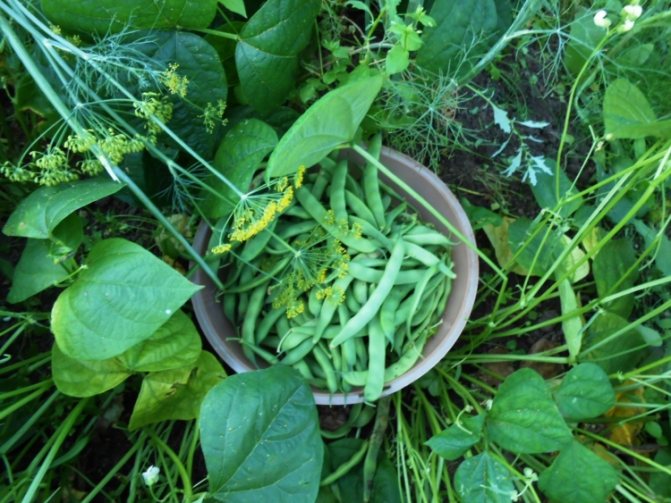

Description of varieties of green beans
There are many varieties of green beans. Some of them did not take root in their summer cottages, for various reasons. Others, on the contrary, have gained popularity, their amateur gardeners warmly recommend each other. Let's consider the most popular ones.
Green Bean Varieties
| Name | Description |
| One of the earliest, fifty-day variety. Shrub and low - up to forty cm. Compact, does not take up much space on the ridge. Pods of emerald green, there are no fibers in them, length - 12 cm, curved shape. The taste is excellent, fresh sweetish. |
| Also precocious. Curly. One lash forms up to nine pods. Their length is 13 cm. The color is bright green. The shape is straight, the surface is smooth. The variety does not differ in increased sugar content, but the pods are fleshy and juicy. |
| It was named so, probably for the arched, strongly curved shape of the pod, which reminded breeders of deer horns. A bushy variety with pods of the color of mature hard cheese. The grains are white inside. Mid-season. Delicious and nutritious fruits. It is said that by growing this variety, two harvest cycles can be harvested per season. |
| Bushy compact mid-season variety. It grows up to half a meter. It is distinguished by its ultra-high yield. The fruits of this variety are herbaceous green. They have no fibers. Especially good for freezing and preservation, but fresh, of course, are also used. |
| Also a bush and also a high-yielding variety.Ripening periods are average. But the fruits are not green, but bright yellow. Beans are white. The taste is very high. |
| A climbing variety that has many features, but the main one is the pronounced aroma of forest mushrooms. The pods are pale green, even whitish. And the beans inside are pinkish. Dishes prepared from this variety retain the mushroom aroma and taste unusually good. |
| Early maturing, fibrous, curly variety with delicate fruits of traditional green color. This variety is distinguished for its disease resistance and high yield. |
| "Winner" | These green beans are also curly and late maturing. Her pods are simply huge - they can grow up to 30 cm. The color and taste are traditional. The yield is high, due to the doubled mass of long fruits. |
| Shrub variety with purple fruits. The pods are about 15 cm, very decorative. Due to the unusual color, they are used very actively in canning. |
| "Oil King" | The fruits are formed on the bush. Early - fifty days. The color of the pod is deep yellow. The taste is delicious, soft, slightly oily. No fibers. The yields are high. |
| A mid-ripening climbing variety, distinguished by twenty-centimeter pods, sparse leaves and lashes up to three meters long. The pod shape is straight, the color is dull green. High productivity. |
Something about green manure properties
Green beans, like any other legume crop, are the best green manure that nature has come up with to increase the yield of your site in an inexpensive and simple way. Its roots "pull" nitrogen from the soil closer to them. They can be eaten not only by the plant itself, but also by those growing nearby. Therefore, many other crops can be sown in the aisles of beans. Pumpkins, melons, zucchini, cucumbers can be planted in the center between the rows. Along the edges of the ridge, they will feel good: peppers, eggplants, white and red cabbage.
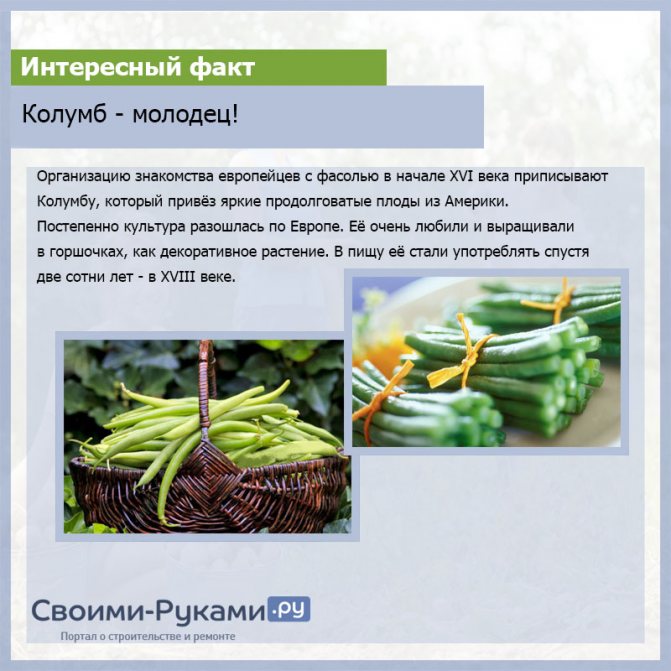

Interesting fact about green beans
And after the harvest is harvested, collect the whips from the supports, or mow the bushes, chop them and bury them in the soil right on the bean bed. Next year you will have a fertile, high-nitrogen field ready for new garden experiments.
When to plant and how to grow?
It is best to start growing beans towards the end of spring (May-early June). The optimal conditions for growing are the temperature of the earth warming up (at a depth of about 6 cm) of at least 10 degrees.
- You can grow green beans in almost any region - the main thing is to properly prepare the soil and seeds. It is also important to plant the plants in open ground on time and provide protection from pests. It is necessary to correctly choose the optimal area in the garden, while it should be borne in mind that at the initial stage of growing, sunlight should fall on the plants for no more than 12 hours.
- It should also be borne in mind that climbing beans must be grown using special devices that will provide reliable and functional support for the future plant.
- Beans grow ideally in the soil on which onions, cucumbers, cabbage and other root varieties of plants were previously grown.
- It is better not to plant green beans seeds in the soil on which perennial grasses, sunflowers, and various legumes were previously grown.
Shrub varieties of beans can be planted in the "aisle" of cabbage, as well as potatoes - this plant does not require additional support, and it is very easy to find a place on the site.
Seed preparation
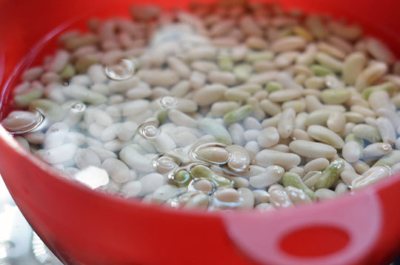

For sowing, it is important to choose only whole seeds without cracks.... Beforehand, they must be soaked in warm water, but you should not "overexpose" the seeds for more than 15 hours.
Soaking is a must because the beans have a fairly hard shell. Experts advise not to wait for the appearance of large sprouts and, after the necessary time, plant the seeds in the ground.
Previously, it is also necessary to carry out primary treatment from pests, which subsequently cause diseases. To do this, before planting, the seeds are soaked in a conventional boric acid solution.
Soil preparation
For planting, you need to choose a sunny area, slightly darkened options are also suitable. It is best to grow beans on soft soils. Previously, the site must be carefully dug up and supplied with fertilizers.:
- organics;
- potassium chloride;
- superphosphate.
Additionally, it is necessary to add a complex with a high potassium content, since this element is necessary for the proper cultivation of fertile green beans.
Step-by-step landing algorithm
Planting beans should be carried out at a standard soil depth of up to 60 mm. At the same time, the harder the soil, the closer it is necessary to plant the seeds, since a too coarse soil structure can interfere with the germination procedure. The disembarkation procedure is as follows:
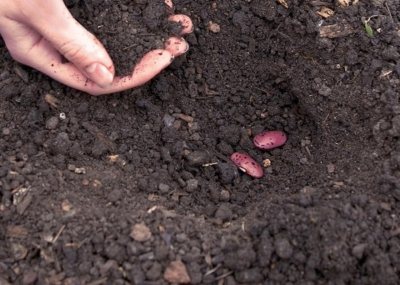

- The beans are planted in prepared dimples 2-3 cm deep. Two seeds must be placed in each hole.
- After the sowing procedure, it is imperative to water the garden bed.
- Next, you should lightly press down the area of soil where the planting took place - a conventional rake is suitable for this.
- When the first shoots appear, it is necessary to begin the hilling procedure, which is performed to accelerate the development of the plant and create optimal growing conditions.
To protect them from cold weather conditions, the “seedlings” should be covered with a non-woven fabric.
The oldest representative of legumes
Beans are reasonably considered by biologists to be the oldest cultivated plant on the planet. There are officially three botanical types of beans.
- The shelling, from which the beans are obtained, is characterized by a dense parchment shell.
- Semi-sugar - this type has a parchment shell of medium hardness.
- Sugar, aka asparagus, in which there is no parchment shell at all, but there is a green, juicy and soft one.
In the garden culture, it is customary to call the latter type of green beans, which are eaten together with the pods. In contrast to peeling varieties, the pods of which are not suitable for food.
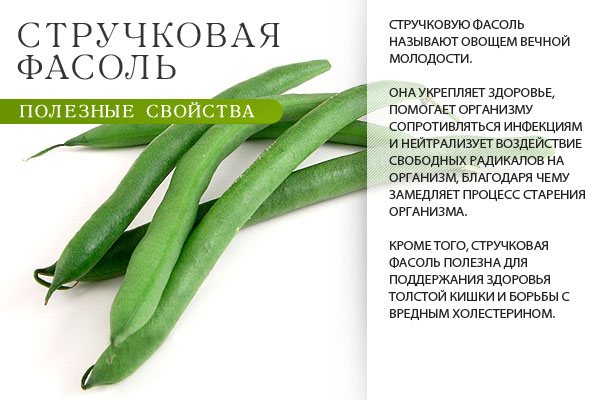

Useful properties of green beans
Beans can be divided into two more types according to the growth method.
- Curly.
- Shrub.
When growing all types of beans, the basic agrotechnical standards are observed, which include the following points.
- Beans do not tolerate sandy, acidic and too heavy soils.
- Loves light, humidity, warmth, drought with difficulty. If the dry season falls on flowering time, the ovary may fall off and there will be no harvest.
- Beans don't like drafts and winds. The plant must be grown quietly.
- Sowing is carried out no earlier than the soil warms up to + 13 ° C (May - June).
- Sowing is preceded by a procedure for warming up and soaking the seeds.
- The seeds of the plant are buried no more than seven centimeters.
- Seedlings of all varieties must be loosened and preferably mulched.
- When the stem grows back by 15 centimeters, the plants need to be spud.
- For climbing varieties, you need to provide support immediately upon planting.
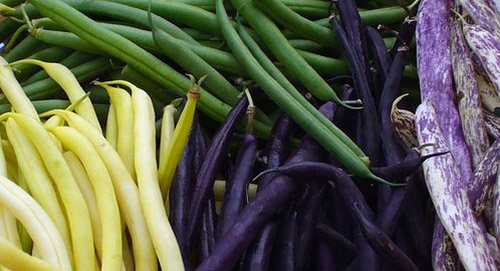

Varieties of green beans
By the way! Not all varieties have classic green pods. In some, the fruits are whitish, yellowish and even bright yellow, purple. Therefore, it is better to be guided when collecting not by the color of the fruit, but by the period of the expected milk ripeness, which is indicated on the package with the seeds.
Outdoor care and cultivation
With proper care and optimal growing conditions, a good harvest of beans is guaranteed.For this, it is necessary to constantly huddle the emerging seedlings in order to give maximum stability. It is also necessary to weed and feed the plants in a timely manner.
- Temperature regime... Asparagus beans are a fairly heat-loving crop - for fast emergence of plants and normal development, the temperature should be at least 20 degrees Celsius. The optimal conditions are considered to be temperatures up to 25 degrees. In such conditions, beans will grow and develop rapidly.
- Watering... Plants need to be watered no more than once a week. When the first four to five leaves are formed, watering must be stopped before the beginning of the flowering period of the beans. Further, watering resumes and becomes more abundant.
- Top dressing... During the formation of the first leaves, the beans must be fed. Superphosphate and potassium salt can be used as fertilizer. During the ripening of fruits, ash must be used as the main fertilizer.
Now you know how to grow a vegetable outdoors, for example, in a vegetable garden in the country.
Precursors for beans
Beans have a beneficial effect on the land, enriching it with natural nitrogen. It is the best predecessor for almost all garden crops. She herself is not particularly picky, she has a large circle of permissible predecessors:
- physalis, tomatoes, peppers, eggplants, potatoes - nightshades will provide the best conditions for beans;
- carrots, beets and other root vegetables take nutrients deeper than beans;
- onions, garlic, wild garlic disinfect the soil and consume trace elements in modest portions;
- zucchini, cucumbers, early cabbage are also acceptable as precursors for legumes.
The only contraindication for beans is other legumes. Sequential planting of them for several years in a row in one place leads to the accumulation of diseases and oversaturation of the soil with nitrogen.
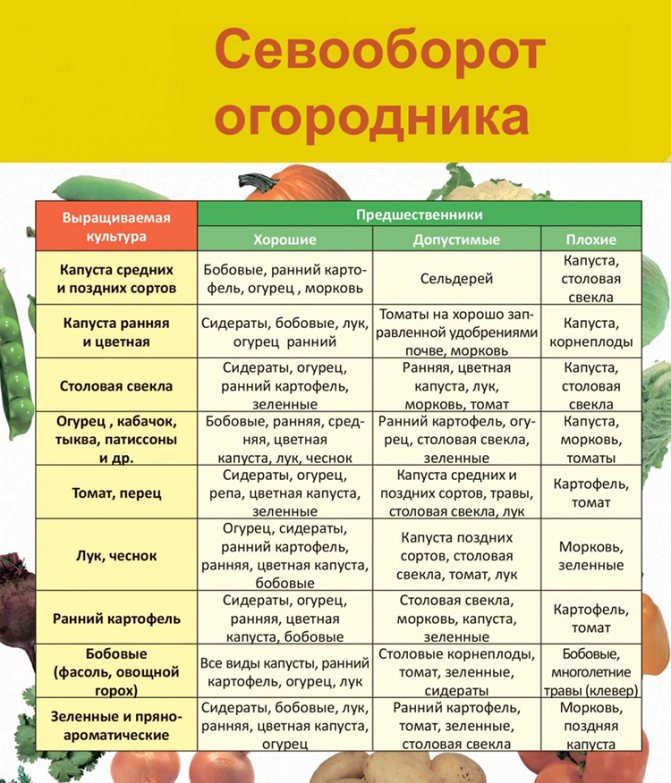

The bean crop rotation should be oriented towards a five-year cycle.
It is good to use bush beans as a compactor for tomatoes or to "add" them to corn, planting the seeds in one hole at a distance of 5-7 centimeters, so that it is easier to weed.
Pest control
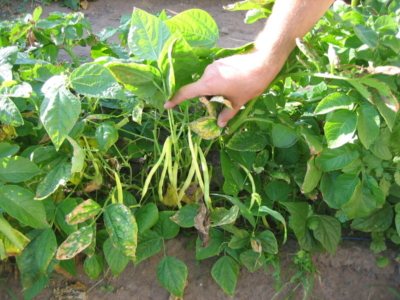

It is impossible to grow a good harvest of beans if you do not take care of protection from pests in advance. The plant can be damaged by a garden scoop, bean weevil, cabbage scoop - they lay eggs on the ground part of the plant, and then the larvae can destroy flowers and fruits of beans and greens. The most dangerous bean weevil is that a small bug gets inside the fruit and gradually destroys it.
To prevent the appearance of pests that can completely destroy the bean crop, it is necessary to regularly treat the plants with a 1% solution of Bitoxibacillin or Gomelin according to the instructions. These drugs are bacterial and work well on the larvae and eggs of pests.
Also seeds must be carefully sorted out before sowing - these preventive actions will protect against the ingress of bean weevils. It is also necessary to process the beans before sowing with boric acid.
Diseases and harmful insects
Beans are often exposed to various diseases in the form of powdery mildew, white rot, rust, bacteriosis, and ascochitis of legumes. This becomes the cause of the death of almost the entire crop, which is why you should carefully choose seed material and take it only from those producers who have proven themselves from the very best side.
Powdery mildew is a problem that gardeners face almost every year. Spores of fungi and bacteria can be stored in the soil for more than one year, and it is rather difficult to destroy them, you have to resort to the help of the most powerful chemicals.
All affected parts of the plant should be destroyed at the stake, in no case left on the ground, and even more so in the soil. At the first signs of the disease, which are expressed as white dust and a film on the leaves and pods, the bushes should be treated with a solution of water and milk in a 1X9 proportion.
It is undesirable to use purchased preparations, since many of them tend to accumulate in plants, and this is not very good for human consumption. However, at the first stage of ovary formation, such processing makes sense.
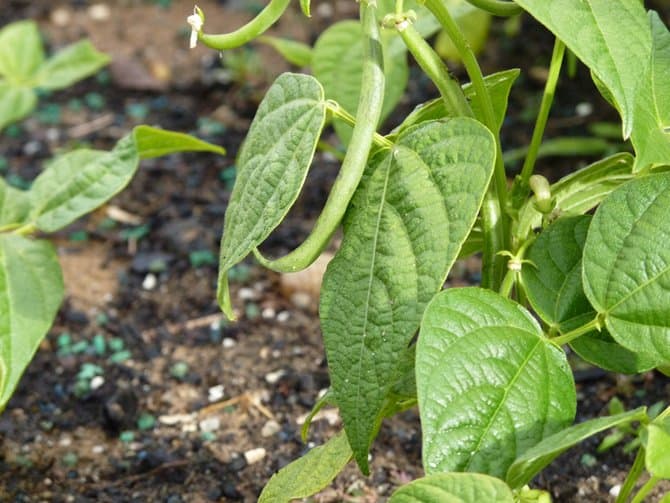

When to harvest the fruit?
The first fruits of young beans can be harvested as early as 2 weeks after the first flowers appear. It should be borne in mind that young beans are not stored for long. If beans are grown for the purpose of obtaining grains, it is necessary to wait until the pods are fully ripe and dry.
- Early bean varieties are usually harvested 50 days after the first sprouts appear.
- Mid-season varieties can only be harvested after 70 days.
- Late ripening varieties are “ready to eat” only 100 days after planting. The length of the pods by this period usually reaches 20 cm.
How to properly prepare seeds for planting
Bean seeds must be prepared before planting in the ground, because the germination and further development of plants depends on the readiness of the planting material.
The usual procedure is to soak the seeds so that it becomes clear which ones can be used for planting and which should be thrown away as they will never hatch.
If you decide to grow beans in seedlings, then prepare planting containers. They can be peat pots or plastic glasses. The soil should have good looseness and air permeability.
Two grains should be planted in one container, then after the sprouts appear, it will be possible to remove the weakest.
I must say that the bean seedlings grow rather quickly and begin to curl within a week after they hatch, so do not rush to planting dates, the best time for sowing seeds will be mid-April.
Beans are afraid of cold weather, planting seedlings in open ground should be carried out with full confidence that recurrent frosts will not return, and the soil has warmed up to a temperature of + 14-15 degrees.
If there is a possibility of greenhouse cultivation of green beans, then the timing of planting seedlings is slightly shifted and produced earlier by 1-2 weeks, depending on the climatic conditions of the region.
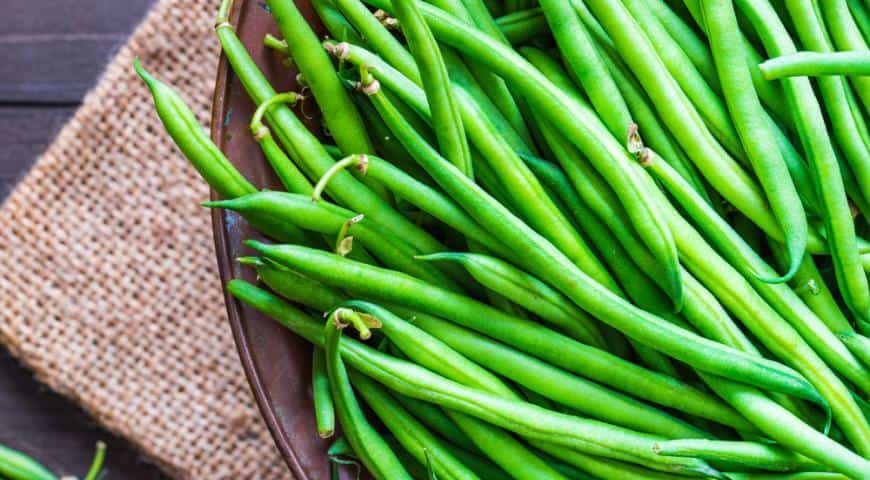

Yield
Usually, 2 kg of the crop is removed from one square meter.... In general, the number of ripe pods and their size will also depend on the correct temperature and light conditions.
Beans are a fairly unpretentious plant, but it is important to observe the recommended planting dates and properly prepare the land for planting beans. It is also necessary to huddle on time and create optimal frost protection. If all conditions are met, you can get a good harvest of a valuable plant, rich in proteins and trace elements important for health.
Sowing seeds
The seeds have been prepared, the ridge is waiting for new "tenants". When starting sowing, it is necessary to decide on what scheme to carry out it.
By the way! The sowing depth of beans depends on the density of the soil. If the mechanical composition is light, it can be buried. If heavy, sow as much as possible to the surface. But in all cases, the range of beans sowing depth is 2-7 cm.
Bush varieties are sown in rows (two, three) or staggered. Holes of a given depth are made. Two beans are placed in each hole. Try to maintain a distance of about 25 cm between the holes, and between the rows: two - 45 cm, three - 35 cm.
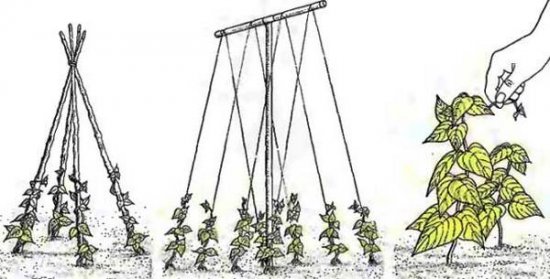

Curly Bean Supports
Curly varieties are sown differently. By the way, there are also semi-creeping varieties. Sowing them is carried out in the same way as climbing.Before sowing, strong supports are installed on the prepared and processed ridge. They can be of any design and from any available materials. You can bend strong wire into arcs, put U-shaped or X-shaped stakes, pipes, plastic slats. A mesh frame stretched over the frame will also do. The main thing is that the lashes of the plant have something to cling to.
The holes are made in the immediate vicinity of the support pillars. It is along them that the beans will climb up to the light and a good harvest. The distance between the holes can be reduced here - 20 cm is enough.
Video - Support - pyramid for beans
Video - How to make a support for beans
Bean care
Bean care work includes regular loosening and weeding, watering, feeding, sometimes thinning and pruning the bushes if necessary.
Determinant bush varieties require a minimum of attention. It is advisable to fertilize their planting when the appearance of the plants indicates a lack of nutrition.
You have to tinker with curly and semi-climbing specimens, since a significant part of them above the ground needs high-quality and regular nutrition. And a longer growing season is fraught with more problems.
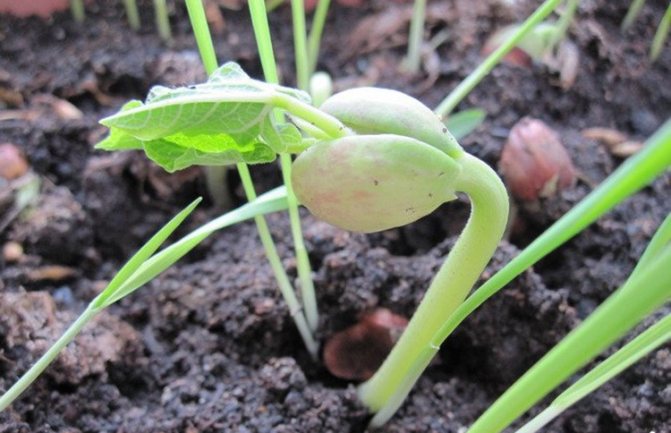

Watering and feeding
Beans are watered early in the morning or in the evening under the root with settled warm water. To do this, you can fill a large container or tank with water from a well in advance and use the water for irrigation a day later, when it warms up to a temperature approximately equal to the air temperature.
Before budding, the beans are watered as needed, alternating moistening with loosening. The soil should remain moist all the time, but the water should not stagnate in the garden.
When flowers begin to set, watering is temporarily suspended. When the pods are tied and grow, watering is carried out about once a week. And then they gradually stop them altogether.
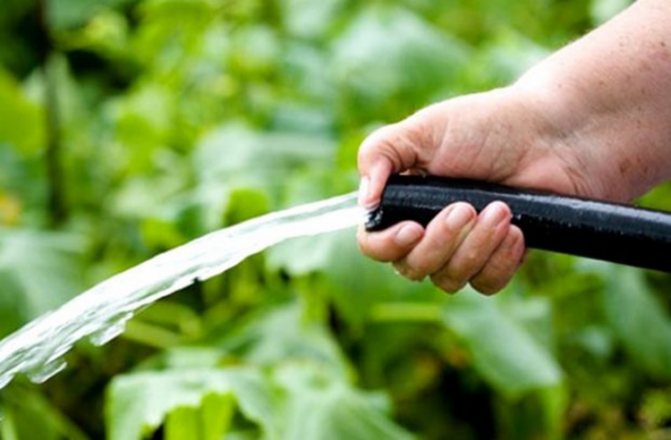

This strategy is not suitable for indeterminate varieties, especially for sugar and semi-sugar varieties - they are watered moderately and regularly throughout the growing season.
Top dressing is applied two or three times per season:
- the first is carried out after the formation of the first pair of true leaves - phosphorus or phosphorus-potassium fertilizers in a solution of 15-20 g per 10 liters of water;
- during the period of mass budding and the beginning of flowering - potash fertilizers (10-15 g per 10 liters) or a solution of wood ash (a glass for 10 liters);
- the third feeding with phosphorus-potassium mixtures in a proportion of 10-15 g per 10 liters of water is carried out during the ripening period of the beans.
Nitrogen fertilizers for beans are evil. Additional feeding makes sense only when the bushes are physically lagging behind in development.
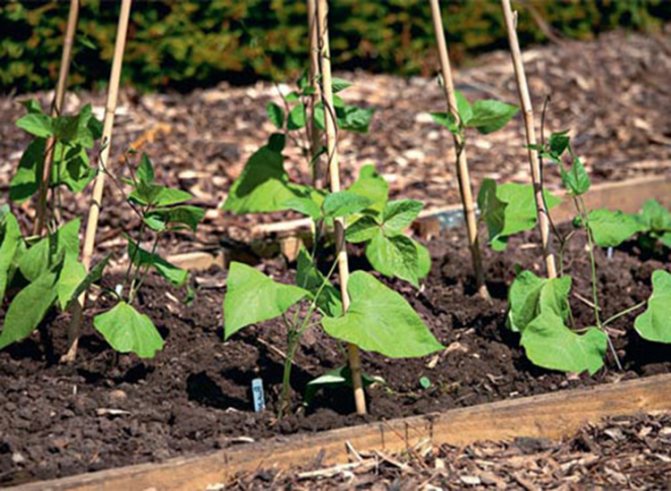

Loosening the soil
This is the main treatment for bush beans and won't hurt curly beans either. Beans do not like dampness at the roots, they need oxygen circulation. Therefore, the crust of the earth in between waterings must be constantly broken.
In dry melon cultivation, this procedure replaces watering. The tool for loosening must be chosen with a small blade, and the work itself must be carried out carefully, without making deep punctures in the soil, so as not to damage the root.
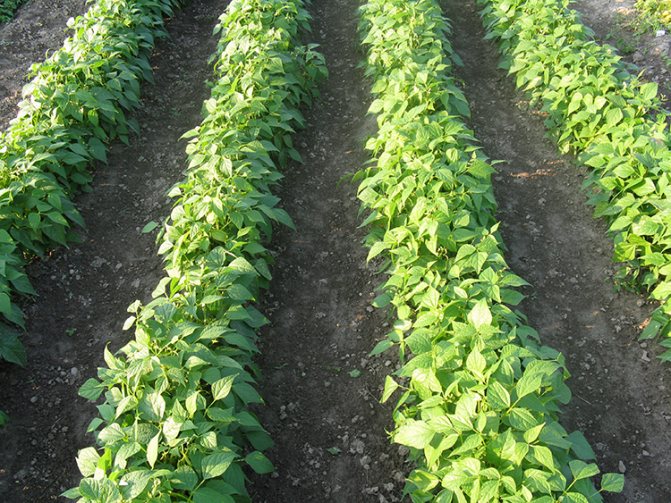

- The first loosening is associated with weeding and is carried out as soon as the first two leaves appear from the ground;
- When the bean bushes reach a height of 6-7 centimeters, a second loosening is carried out;
- The third is carried out simultaneously with a small hilling after two weeks;
- Before closing the rows, the last loosening is carried out;
- If the bushes are planted at a large interval, then this procedure can not be neglected in the future.
The hole under the tied bushes is loosened as needed.
Bean garter
Curly varieties require a support, which is wiser to install in advance. A large mesh or thin vertical support works best. Tie up the beans in rare loops, without pulling the stem.Too often, it is not necessary to fasten the bean vine to the support, it clings to it itself perfectly.
Shrub varieties that reach a height of 60 centimeters, such as Flamingo or Shokoladnitsa, also need support. You can plant such plants in one row and, having installed two pegs at each end of the row, pull a circular horizontal support made of twine between them. Single bushes can be tied to an individual support by placing a peg next to it and securing the stem to it with a loose fabric loop.
What is the difference between asparagus beans
Asparagus (or green beans) beans are a type of common beans. It differs in that unripe pods are eaten together with the valves. They lack rigid fibers and an inner so-called parchment layer. In terms of taste and cooking methods, such beans resemble young asparagus, hence its colloquial name. Ripe green beans are also used for cooking. They are finer and tougher than common beans and therefore require pre-soaking and longer boiling.
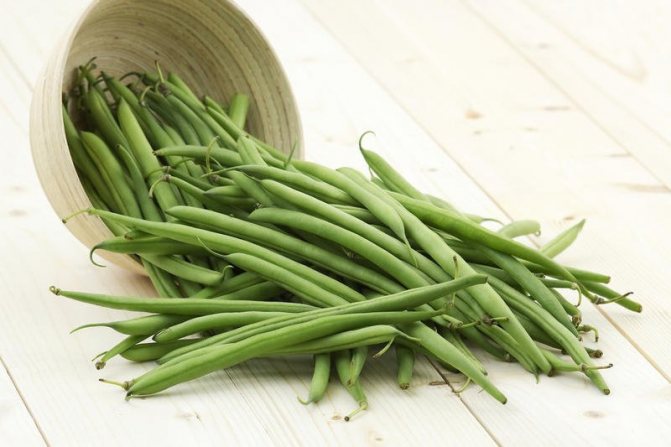

Fresh asparagus beans cannot be stored for a long time, after a couple of weeks they coarse and dry out
Garden bed preparation
Soil preparation for planting legumes begins in the fall season. The soil is cleaned of grass and dug up. In order for the soil to become nutritious, it is introduced (calculated per 1 sq. M):
- 4 kg of humus;
- 1 tbsp. l. saltpeter;
- 1 tbsp. l. potassium chloride;
- 2 tbsp. l. dolomite flour;
- 1 tbsp. l. superphosphate.
In the spring season, the soil is again dug up and fluffed up with a rake. If the soil is viscous, then 5 kg of river sand per 1 sq. m.
Before planting, the ground is disinfected with a weak solution of potassium permanganate.
Illumination
All varieties of beans are plants that require intense lighting. For ripening, the length of the daylight period is not more than 10-12 hours.
Starting sowing, it is better to know in advance about the upcoming daylight hours in the forecast.
With good lighting conditions, the plants will quickly move to the fruiting stage and form a large harvest. In areas with longer daylight hours than the plant requires, seeds are planted in the second half of summer or the beds are covered with opaque frames with a covering material.
See also
The benefits and harms of red beans for the human bodyRead


It is important to observe strict requirements for the illumination of the beds only at the beginning of the development of seedlings. With further growth, the beans continue to develop and bear fruit with less dependence on light. In addition, breeders have bred several varieties that are immune to the length of daylight hours.
Landing dates
You can sow beans at any time from early spring to early August. As a rule, planting of beans begins simultaneously with the massive flowering of chestnuts. In southern regions, legumes can be grown as a re-crop after harvesting previously planted vegetables.
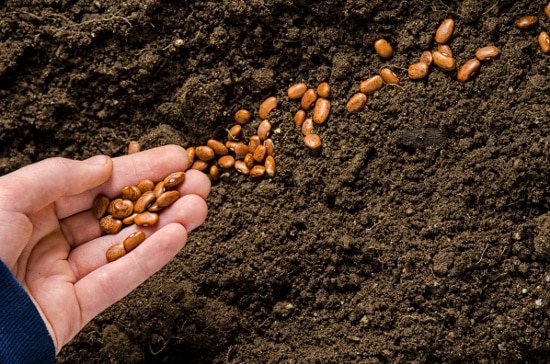

Multiple sowing at intervals of 10-12 days allows you to harvest fresh crops for a long time. It is enough to set aside a small bed and periodically pluck the pods before direct cooking.
Protecting beans from pests
The most common pest of green plants is aphids, which are simultaneously a carrier of fungal diseases, thrips, spider mites, pea moth, and ripe beans are actively devoured by bruchus (pea weevils) and pea weevils. Beans are damaged by slugs and a number of pests from the polyphagous group.
Slugs can be collected and physically destroyed by placing pieces of cardboard, rags, burlap and other covering material waste in the aisles. There they hide for the night and from the scorching rays of the sun. You can dust the soil around the plants with lime or ash. This technique will scare away slugs.
The fight against aphids on beans is carried out with the same preparations as on other crops. Use infusions of onion peel, celandine, walnut leaves, tomato tops, green or laundry soap (not bleaching), tobacco infusions, celandine.
Against thrips, a powdery biological product Boverin is used, from which, according to the recommendations, a working solution is prepared and the plants are sprayed. The treatments are repeated after 7-10 days at least 3 times. The most effective treatments are at high humidity, when the revitalization and germination of fungal spores is accelerated. In dry weather, the plants are pre-watered.
Thrips and mites are effectively destroyed with a kerosene solution (2-5 ml per 10 liters of water). Stir the working solution thoroughly and spray on the plants.
Against other pests (aphids, cobweb mites, pea moths, whiteflies), biological products Gaupsin, Bicol, Boverin, Verticillin and others are used. They are effective against thrips, ticks, whiteflies. The best is Gaupsin. It is effective against fungal diseases and pests at the same time during the growing season. It can be used almost until the biological ripeness of the crop.
Caryopsis (beans, pea kernels) directly damage the beans. The grains die at subzero temperatures. For the safety of the food product, the grain is placed in linen bags soaked in salt water and dried. You can also put a head of garlic there. Store in a refrigerator until frost, and in winter in an unheated room with a negative temperature. Other ways to preserve grain include:
Place the grain in the freezer. At -12 ° C, adult beetles and pest eggs die within an hour.
Hold the grain in the oven at +90 ºС for several minutes. Pests die. In the future, store the grain in glass jars with ground-in lids (not plastic) in a cold room.
Briefly about the biology of beans
Beans (Phaseolus) in the plant system belongs to the family legumes (Fabaceae). Contains about 90 species, among which the type is accepted Common beans (Phaseolus vulgaris). Under natural conditions, it grows in warm zones of Europe and Asia. Outdoors, it is cultivated in the southern and adjacent regions of the European and warm regions of the Asian part of Russia.
Common beans are an annual herb with a tap-branching root, from 0.5 to 3.0 m in height, bushy or climbing form.
Bean stems are branched, covered with sparse hairs. Leaves are intensely green in different shades, trifoliate long-petiolate. Flowers are located in the axils of the leaves.
Bean flowers are irregular moth flowers, 2-6 in a sparse raceme. The color of sepals: white, cream, pink, lilac, purple, violet, gives plants an elegant look and is often used simultaneously as a food and ornamental crop in suburban and house plots.
The fruit of the bean is a bivalve bean (not a pod). Seeds in the form of beans, separated from each other by incomplete septa.
Bean fruit is straight or curved, 5-20 cm long and 1.0-2.0 cm wide, contains from 3 to 8 beans-seeds of different colors and sizes inside. In appearance, the bob resembles a boat. From Greek it is translated as "boat, boat". Beans and young legume blades are used for food.
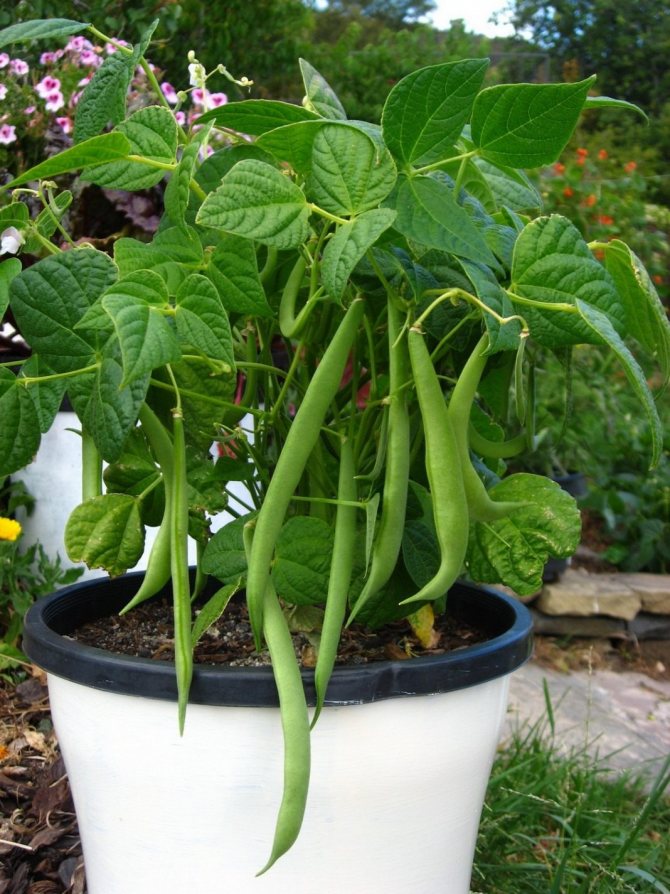

Green beans. <>
How to process beans before sowing
Correct planting of beans requires preliminary preparation of seeds before planting. The seed needs to be warmed up, it is better to do it naturally. To do this, it is enough to leave the seeds in the open air at a temperature of about 30 degrees.
If weather conditions do not allow heating, an electric dryer can be used.
After that, the seeds must be soaked in warm water for 24 hours.


Description of the plant, its benefits
String beans (aka asparagus) are one of the most ancient "cultivated" plants by man. The homeland of most of its varieties is Central and South America, but it was well known in Ancient Egypt and China. Europeans got to know the culture only in the 16th century, when the continent on the other side of the Atlantic Ocean was discovered.
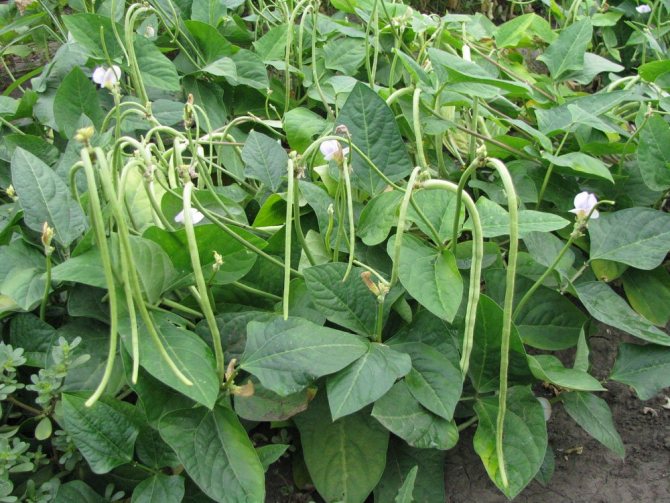

Asparagus beans have been familiar to mankind for thousands of years.
For a long time, green beans were used exclusively as an ornamental plant, decorating gardens and greenhouses. It began to be eaten only in the 18th century. Moreover, this was considered the privilege of the aristocracy. Around the same time, asparagus beans came to Russia, where they were known as "French beans".
Green beans are:
- Shrub. A compact plant that does not need support. It tolerates low temperatures better. No support is needed. Fruiting is amicable.
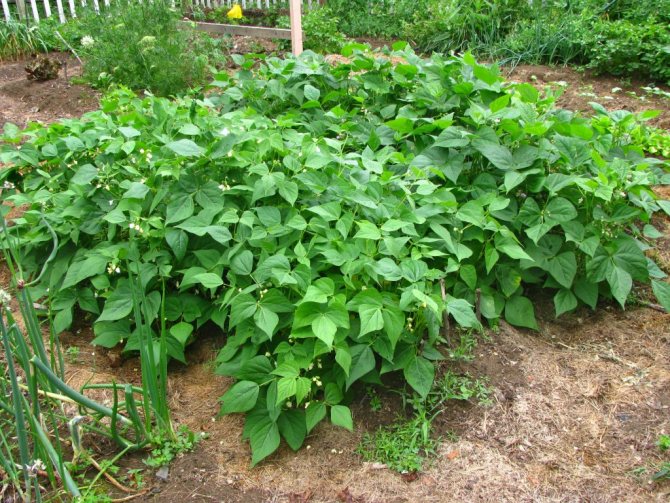

Bush beans are a fairly compact, low plant
- Curly. Liana is on average 2.5-3 m long. For cultivation, you will definitely need a support. It is widely used in landscape design. Differs in higher productivity and a long fruiting period. Takes up less space - it grows mainly upwards.
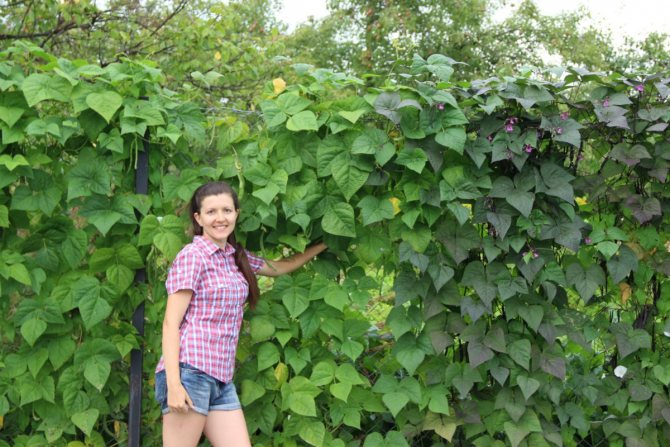

Planting curly beans saves space in the garden, because it grows mainly up
The flowers of green beans are most often white or greenish, small. Decorative varieties have been bred by selective breeding, in which they are painted in different shades of red, purple, lilac, violet. The shape, length, color of pods and beans also vary greatly. They can be nearly flat and round, straight and curved. The most common colors are green, yellow, and purple. Less common are white, pink, and speckled beans.
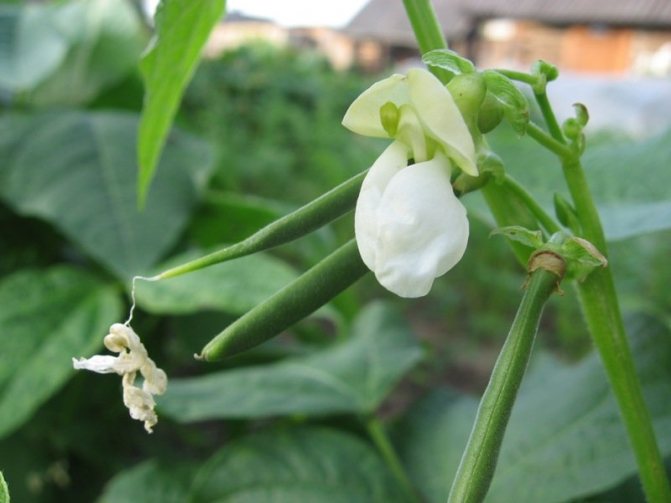

Bean flowering (with the exception of some specially bred ornamental varieties) is not the most spectacular sight
The main difference between asparagus beans and grain or shelling beans is the ability to eat the whole pods without extracting the beans. They do not have a "parchment" layer and hard fibers inside. But this only applies to young pods. When they are overripe whole for food, they are no longer suitable.
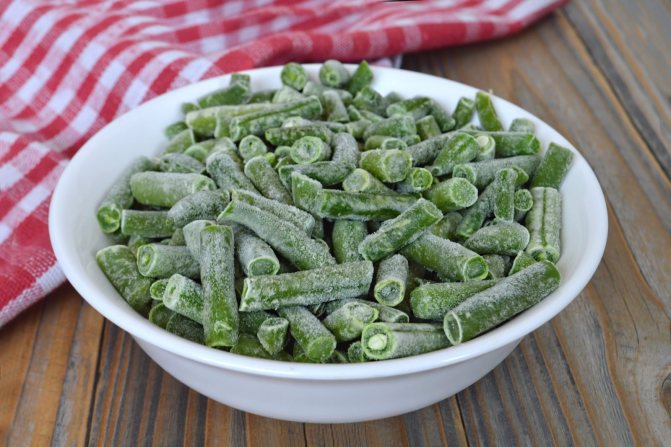

Asparagus beans are eaten along with the pods, and it is in this form that they are sold in stores.
Green beans are a part of many dishes and are an integral part of South American and Mediterranean cuisine. Chopped pods are added to soups, salads, stews, boiled, stewed, steamed beans are served as a side dish for meat, fish, and poultry dishes. Of vegetables, it goes well with broccoli, cauliflower, eggplant, bell peppers, carrots, tomatoes. And also with eggs, cheeses, mushrooms.
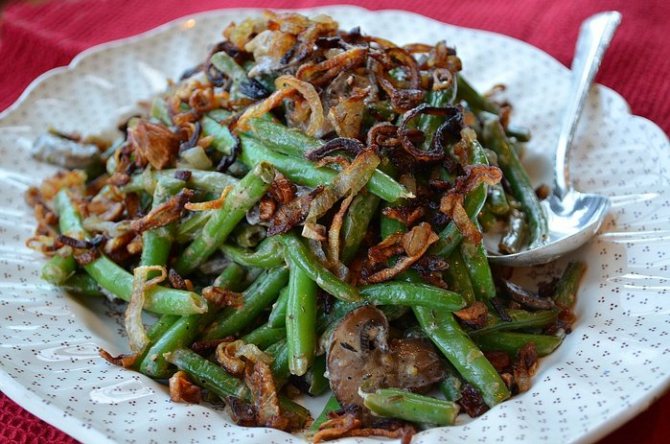

Green beans are not only healthy, but also very tasty
Asparagus beans are not a great taste, but they are also great benefits for the body. Like all legumes, it is rich in easily digestible fiber and protein. Vegetarians appreciate it as a complete substitute for meat products. Rich in pods and trace elements. Most of them are potassium, magnesium, calcium, iron, zinc, phosphorus, from vitamins - A, E, C, group B. Green beans can be included in the menu for those who follow a diet, wanting to lose weight. It has the ability to normalize carbohydrate metabolism and is low in calories (only 23 kcal per 100 g).
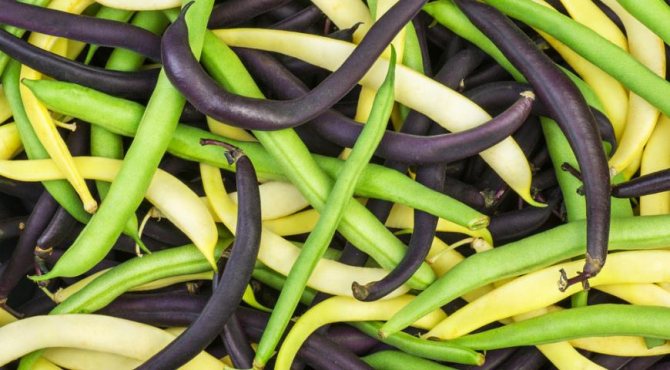

Asparagus bean pods, in addition to the usual green, can be painted in more unusual colors.
It has been scientifically proven that green beans help, if you need to increase the level of hemoglobin in the blood, get rid of cholesterol "plaques", normalize the functioning of the stomach, intestines, gall bladder. If you constantly include beans in the diet, excess salt is removed from the body (very important for edema and joint problems), toxins, and the body's defense against the negative effects of free radicals improves. It is also important that the product always remains environmentally friendly. When grown, green beans do not absorb harmful substances from the soil and atmosphere.
There are also contraindications. The use of pods is not recommended for exacerbation of any chronic diseases of the stomach and intestines. And due to the high content of oxalic acid - also with urolithiasis.
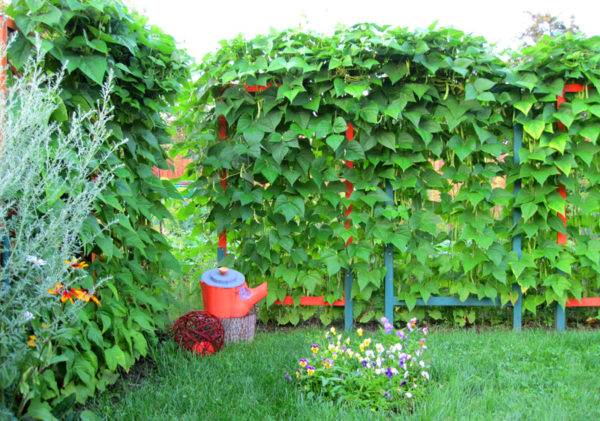

Climbing beans are often used to create hedges and "green walls" by landscape designers
Green beans are very beneficial for women. With regular inclusion in the diet, it:
- has a beneficial effect on the nervous system, eliminating increased excitability, emotional instability characteristic of PMS is more easily tolerated;
- normalizes the hormonal rhythm, which is vital during pregnancy and the onset of menopause;
- has a positive effect on metabolism;
- helps to preserve tooth enamel, improves the condition of hair and nails;
- is an effective prevention of diseases of the genitourinary system;
- improves the condition of the skin (inflammation disappears, the activity of the sebaceous glands normalizes).
The benefits of green beans have been appreciated by women for a long time. The Egyptian Queen Cleopatra, famous among other things for her beauty and unfading youth, used it as an integral component of face masks. In ancient Rome, a powder was made from it to soften, whiten and smooth the skin.
Video: how are asparagus beans good for the body?
Harvesting and storage
The timing of the harvesting of beans directly depends on the type and variety of the grown crop. Asparagus beans should not be overexposed in the soil, as legumes in the dried state lose their beneficial properties. If you wish to preserve the crop, you can even harvest unripe fruits. Dried pods are suitable for winter harvesting.
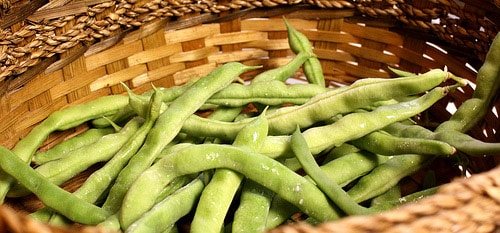

It is not recommended to harvest beans from all bushes at once if some of the pods are still green. In the shade of their own leaves, seedlings may develop more slowly, so it is better to leave them to ripen, which will help increase the yield of beans. As a rule, subject to the rules of cultivation, the moment when it is possible to harvest fruits without risk of disrupting an unripe crop occurs 2-2.5 months after planting.
It is recommended to store the crop in a dry and cool place. The beans can be folded into a canvas bag or glass containers. It is important that the crop is not exposed to direct sunlight. Beforehand, you should thoroughly dry the legumes to prevent rotting during long-term storage. If desired, the harvested crop can be frozen by dividing it in portions into several parts. This will allow you to always have a product at hand during the winter that will retain its original beneficial properties and taste.
Protecting beans from disease
The main diseases of beans are fungal, bacterial rot and viral diseases.
Mosaic
There are no effective drugs to fight viral diseases. Diseased plants are destroyed. A viral disease is distinguished from others by the dwarfism of the plant, mosaic coloring in the form of inclusions in the main color of the leaf (mosaic), wrinkling of the leaves, sometimes swelling in the form of bubbles. Mosaic-resistant varieties of Robusta and Corbetta are recommended for cultivation in personal plots and summer cottages.
White and gray bean rot
White rot affects the stems and beans of the beans. The main signs are the appearance of a white mycelium, which is accompanied by whitening and softening of diseased tissues. Unlike white, the manifestation of gray rot begins with a grayish bloom, which gradually envelops the stems and leaves, causing decay. The end result of the disease is plant death.
Anthracnose
The source of anthracnose damage is imperfect mushrooms of various types. External manifestation begins with the leaves, on which there are rounded, and on the stems - elongated light brown spots.The fruits rot, and the seeds in them become carriers of infection.
Root rot
Root rot affects seedlings, in which the tip of the main root dries up, and in adult plants, growth stops, the leaves turn yellow and fall off. Flowers and ovaries also fall off.
Powdery mildew
Like other legumes, beans are affected by powdery mildew. On the affected leaves, the mycelium of the fungus appears as a white powdery bloom or resembles a cloth sprinkled with flour. Over time, the affected organs, including the stems, turn yellow and dry out.
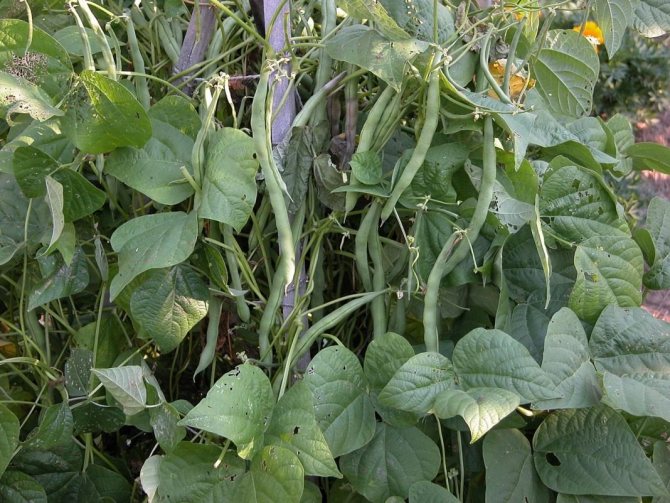

Common beans (Phaseolus vulgaris).
Features of growing in the country
When growing beans in a summer cottage, the planting technology is standard, but at the same time there are several features for care. The seeds are preheated and soaked, due to which they quickly germinate. An abundance of moisture is necessary for the swelling of thick cotyledons, and insufficient watering can lead to stunted growth.
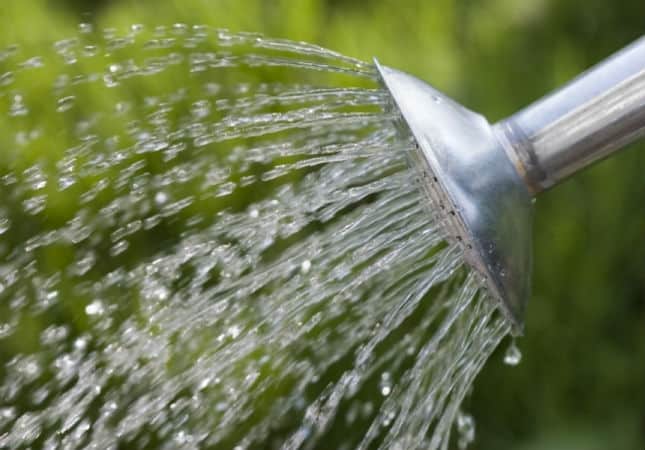

The longer the shift lasts in the soil, the higher the risk of pest infestation. Presowing soaking activates the seedling formation process and shortens the overall growing period.
How to plant beans in the country - a description of the planting process
Knowing how to plant beans seeds correctly, it will be possible to create suitable conditions for active vegetation. The most acceptable and common option for planting beans is an ordinary scheme. Seeds should be planted to a depth of about 5 cm every 20-25 cm.The optimal row spacing is 30-40 cm.
For planting, you need to carefully dig holes and place several seeds in each.
Immediately after sowing, the soil is watered and compacted. To accelerate germination, the soil can be covered with a protective film or non-woven fibrous material.
Testimonials
Growing green beans is easy. Therefore, such a culture can be grown even by novice gardeners. Ornamental climbing varieties show high yields. In addition, they become an excellent decoration for a summer cottage and improve the structure of the soil.
Tags: growing, planting, pod, care, beans
About
«Previous post

